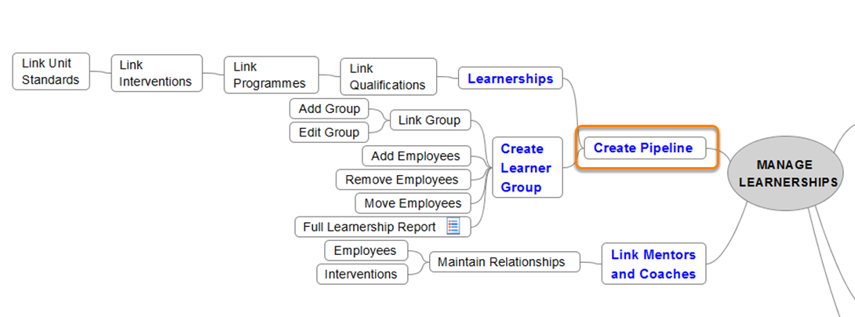Leading Factors to Sign Up in an LMS Learnership for Professional Improvement
Leading Factors to Sign Up in an LMS Learnership for Professional Improvement
Blog Article
Strategic Application of LMS Learnership Programs for Lasting Worker Growth
In the world of labor force development, the tactical implementation of Learning Monitoring System (LMS) learnership programs stands as a cornerstone for promoting sustainable staff member development within organizations. By delving right into the complexities of developing and performing LMS learnership programs with a tactical lens, companies can open a huge selection of benefits that not just improve worker abilities but likewise contribute to the total sustainability and success of the company.
Benefits of LMS Learnership Programs
LMS learnership programs use a wide variety of advantages for both staff members and companies looking for constant specialist growth. Additionally, these programs often provide a large array of training courses and resources, allowing staff members to get brand-new abilities and expertise relevant to their roles or profession ambitions.
Moreover, LMS learnership programs advertise a society of constant knowing within organizations (lms learnership). Overall, the advantages of LMS learnership programs prolong beyond individual growth to include the holistic advancement of both staff members and the organizations they serve.

Trick Strategies for Implementation
Building upon the fundamental advantages highlighted previously, reliable execution of learnership programs calls for strategic preparation and implementation to optimize their effect on employee development and organizational growth. One essential technique for successful implementation is aligning the learnership program with the organization's general goals and goals. By making sure that the program's web content and framework remain in sync with the firm's tactical direction, employees are much more most likely to see the importance of their engagement and exactly how it contributes to the larger picture.
Management support not just offers the essential resources and financing yet likewise sends a message to workers about the program's significance. In addition, creating a durable interaction plan that details the program's structure, advantages, and assumptions assists in taking care of individual and stakeholder expectations, promoting engagement, and maintaining transparency throughout the application procedure.
Measuring Program Efficiency
Reliable measurement of the learnership program's effect is essential for analyzing its overall efficiency in improving worker advancement and adding to organizational growth. To determine program performance, key performance signs (KPIs) require to be developed. These KPIs should align with the program's goals and the company's critical goals. Common KPIs for determining the efficiency of learnership programs consist of worker engagement degrees, knowledge retention rates, skills enhancement, Source and performance improvements. Surveys, assessments, and feedback mechanisms can be utilized to gather quantitative and qualitative data on these KPIs.

Overcoming Implementation Challenges
To guarantee the successful execution of learnership programs and maximize their influence on staff member growth, organizations must address and overcome various challenges that may arise during the implementation phase. One common obstacle encountered is resistance from staff members that might be reluctant to take part in new knowing efforts. This can be reduced through clear interaction about the benefits of the program and attending to any kind of worries increased by staff.
An Learn More additional obstacle is the absence of resources, both in terms of budget constraints and time limitations. Organizations can overcome this by prioritizing the allocation of sources in the direction of the learnership program and looking for outside funding or partnerships to support its execution.
In addition, ensuring energetic involvement and interaction from both workers and administration is vital for the success of the program. This can be attained with establishing clear goals and expectations, offering continuous support and responses, and acknowledging and awarding achievements. By proactively addressing these implementation difficulties, organizations can improve the performance and sustainability of their learnership programs for employee development.
Ensuring Long-Term Sustainability
Securing the durability of worker advancement campaigns requires tactical planning and continual adjustment to progressing business demands and outside factors. To ensure the long-term sustainability of LMS learnership programs, companies must focus on several essential facets. To start with, it is necessary to routinely assess the performance of the program through performance metrics, participant responses, and alignment with service objectives. This analysis enables the identification of areas for enhancement and modification to make certain the program continues to be relevant and impactful.
Integrating the learnership program into the company's lasting calculated planning guarantees that it receives the needed resources, buy-in from management, and positioning with the organization's future instructions. By taking a positive and holistic find more info strategy to the sustainability of LMS learnership programs, companies can cultivate a skilled and dexterous workforce qualified of satisfying the difficulties of tomorrow.
Conclusion
To conclude, the tactical implementation of LMS learnership programs is crucial for lasting worker development. By concentrating on advantages, key approaches, determining performance, overcoming challenges, and making certain long-lasting sustainability, companies can create a structured strategy to support continual understanding and growth. This method enables employees to improve their abilities and expertise, inevitably leading to enhanced performance and efficiency within the company.
Report this page